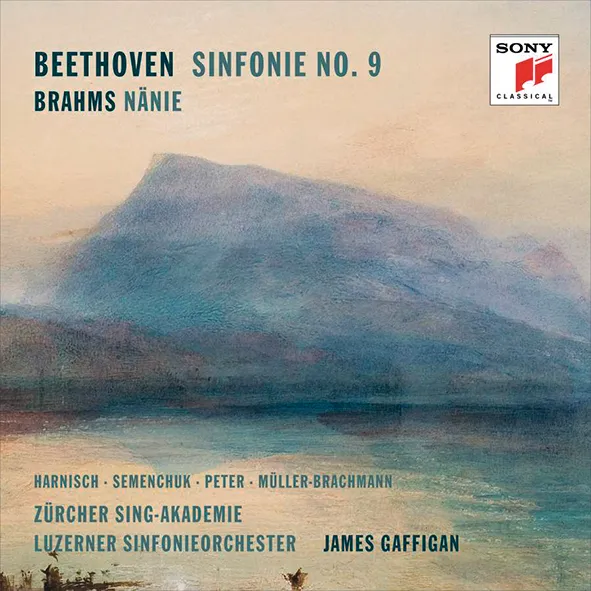
Beethoven Symphony No. 9; Fidelio – ‘O welche Lust’; Brahms Nänie Rachel Harnisch (soprano), Ekaterina Semenchuk (mezzo-soprano), Mauro Peter (tenor), Hanno Müller-Brachmann (bass-baritone); Zürcher Sing-Akademie; Luzerner Sinfonieorchester/James Gaffigan Sony 88985458292 141:63 mins (2 discs)
James Gaffigan’s new recording of Beethoven’s Ninth comes with a bonus disc containing the prisoners’ chorus from Act I of Fidelio, and Brahms’s Nänie for chorus and orchestra. The Beethoven, inevitably more moving when heard in its operatic context, ties in with the Symphony through the supposed notions of freedom embodied in Schiller’s ‘Ode to Joy’. Brahms’s piece, named after the funeral deity Nenia and written in memory of his artist friend Anselm Feuerbach, sets another text by Schiller – this time, a philosophical poem lamenting the transience that even beautiful things cannot avoid. It’s one of the less familiar among Brahms’s choral works, and it’s good to hear it here, with its long opening melody eloquently played by the Lucerne Symphony Orchestra’s principal oboist.
Beethoven’s Symphony is very well performed, too, with a decent, if not stellar, line-up of soloists. Gaffigan is meticulous in his observance of the composer’s dynamic markings, so it’s a pity he’s not equally scrupulous about observing the scherzo’s second-half repeat. A couple of other minor gripes: the ‘horror fanfare’ which begins the finale is a little tame, and the Turkish march episode could have been more sprightly. However, the setting of ‘And the cherub stands before God’ immediately preceding the Turkish march packs a tremendous punch, and the drama elsewhere in the finale is vividly captured by Gaffigan. His tempo for the Symphony’s slow movement, too, is ideal, conveying the music’s serenity without dragging unduly. The orchestral balance, with violins divided left and right, is admirable, as is the recorded sound.
Misha Donat